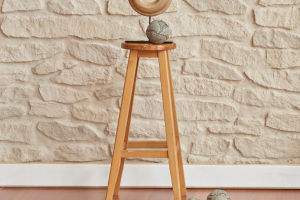In today's fast-paced and bustling modern life, we find ourselves gradually losing touch with ancient and beautiful craftsmanship.
Movable type engraving, ramie weaving, handmade paper, and bamboo woven artifacts are just a few examples of intricate skills that have faded into obscurity.
Among them, the art of bamboo weaving stands out as a testament to a bygone era.
Once an integral part of the older generation's daily lives, bamboo woven products were ubiquitous, gracing every household and market. From the bamboo baskets accompanying grandmothers to the market to needle and thread boxes, bamboo plaques for sun-drying grains, and bamboo chairs for idle moments, these items were commonplace.
Today, however, they are increasingly difficult to find, with modern society growing unfamiliar with the intricate process of bamboo weaving.
The process of crafting bamboo woven items begins with the careful selection of bamboo during the cutting season, typically between winter and spring. This period ensures that the bamboo material is well-organized, resistant to pests, and of optimal strength.
Different types of bamboo are chosen based on their age, with classifications ranging from new bamboo to the fourth generation, each serving specific weaving needs.
Following the cutting of bamboo, a series of labor-intensive steps, including splitting, rolling, scraping, breaking, and passing through the sword gate, transforms the bamboo into pliable gabions ready for weaving.
To enhance durability, these gabions undergo treatments such as carbonization, steaming to prevent pests and mildew, and dyeing and painting for color enrichment, ensuring the bamboo meets the diverse requirements of weaving.
Despite the availability of machines to assist in gabion splitting, true artisans adhere to the traditional method of hand-splitting to preserve the bamboo's fiber structure. Handcraftsmanship plays a pivotal role in bamboo weaving, emphasizing the beauty of skill and expertise.
Bamboo weaving encompasses two main categories: flat weaving and three-dimensional weaving, employing techniques such as cross weaving, hexagonal weaving, triangular weaving, and various other methods.
With over 200 heirloom bamboo weaving techniques, artisans continuously innovate, showcasing the artistry embedded in this age-old craft.
From a global perspective, bamboo has gained prominence as an environmentally friendly, durable, and lightweight alternative to wood. The concept of "bamboo instead of wood" aligns with the growing demand for sustainable materials amidst diminishing forest resources and heightened environmental awareness.
Bamboo, with its short growth cycle of 4-5 years compared to wood's 15 years, emerges as a vital resource in the pursuit of eco-efficiency.
Furthermore, the trend towards "green, natural, and ecological" consumption has propelled bamboo home furnishings into the limelight.
Consumers, particularly in Europe and the United States, appreciate bamboo's regenerative properties, clear grain, natural color, pleasant fragrance, and elegant texture.
As a result, bamboo has become an ideal substitute for wood and other materials, embodying a harmonious blend of environmental responsibility and aesthetic appeal.
In addition to its environmental and aesthetic appeal, bamboo weaving holds cultural significance as a traditional craft that fosters a sense of heritage and community.
The intricate weaving techniques passed down through generations, contribute to the preservation of cultural identity. Moreover, the revival of bamboo weaving aligns with a broader movement embracing handmade and artisanal products, appealing to those seeking unique, culturally rich items.
As workshops and educational initiatives promote the art of bamboo weaving, there's a resurgence of interest and appreciation.


